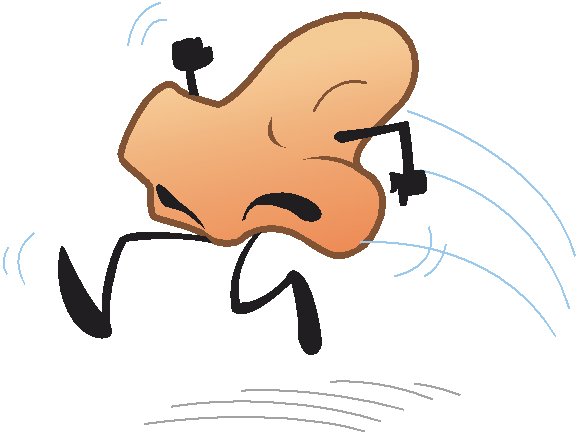One of my favorite authors is Ilona Andrews, a husband and wife team who live in south-central Texas and write great fiction. This week in their blog, they mentioned how Gordon struggled with his chronic allergies, and how he was hoping they could eventually move to a place where he could get a break from them.
From my 40 years as a pharmacist, I remember the days when we had far fewer options to relieve symptoms of “hay fever” or allergic rhinitis. Today we have allergy-relief from eye drops, steroid nasal sprays and non-sedating antihistamines. Back 20-30 years ago, people needing an antihistamine every day to tame their stuffy nose, runny nose, itchy eyes, and sinus pressure had a dilemma.
While some folks could take the same antihistamine all year long, others got excellent results for several months, and then their medicine quit working. Most of the time, they fixed the problem by switching to another antihistamine. This solution worked for a while, until THAT allergy medicine stopped working, too.
The medical term for this is tachyphylaxis, which means the medicine is active for a short time, then suddenly stops working. If you only need to take an antihistamine for a couple of months, like I do during ragweed season, you aren’t likely to notice it. If your allergies flared up all year long like Gordon, you would switch to a different antihistamine every time the one you were taking stopped working.
But here’s the weird thing. After being off an antihistamine for several months, when you restarted it, it would work!Back then, it was not unusual for people with year-round allergies to cycle through 2 or 3 different antihistamines through the year, on each one for 3-6 months.
Today we have newer antihistamines like Claritin® (loratadine), Allegra® (fexofenadine), and Zyrtec® (cetirizine). These 3 have three significant advantages over older antihistamine medicines: they rarely cause drowsiness, they only need to be taken once a day, and these newer agents rarely quit working on you like older antihistamines can do. But rarely doesn’t mean NEVER. Gordon may be able to improve his allergy symptoms by switching his current antihistamine for a different one.
My very favorite allergy medicine is an older one called Actifed® (triprolidine and pseudoephedrine). I like it the best because it doesn’t cause me any drowsiness and helps dry up my runny nose. It contains the original Sudafed® ingredient, pseudoephedrine. Unfortunately, when my husband ran out of it while in Dayton, Ohio, he went to pharmacy after pharmacy, asking for it. The pharmacists looked at him like he was loony because they had never heard of it! Now I make sure we each pack plenty of it so we have it available when traveling.
Another strategy for relieving symptoms is desensitizing yourself to what triggers your allergies. If plant-based pollens cause most of your allergic symptoms, eating local raw honey can make a difference. The trick is to get locally sourced honey, usually available at your local farmer’s market.
Here are 5 Suggestions for Relief of Year-Round Allergies:
- Rotate your antihistamines.
Try switching to another antihistamine whenever you notice an increase in your symptoms. If you take Claritin® (loratadine), try Zyrtec® (cetirizine) or Actifed® (triprolidine/pseudoephedrine) instead. Benadryl® (diphenhydramine) causes more drowsiness than any other antihistamine and is available as a popular sleep aid in addition to an allergy remedy.
- Use a steroid nasal spray.
Nasal sprays are the most effective treatment for your round allergies. Nearly all of the nasal sprays that used to be prescription are available without a prescription at their full strength. You can also use a nasal spray in addition to taking antihistamines.
- Try Actifed® (triprolidine/pseudoephedrine).
This antihistamine and decongestant combination relieves both a stuffy nose AND a runny nose. It’s not widely available, so you’ll probably need to go to an independent pharmacy and ask them to special-order it for you.
- Stick to the original formula of Sudafed®.
Sudafed® did a big switch a few years ago to a different medicine, phenylephrine instead of pseudoephedrine. If Gordon has switched to the over-the-counter Sudafed® that you find on the shelf, he could be suffering needlessly because that stuff doesn’t work! The federal government restricted pseudoephedrine because it is useful in manufacturing methamphetamine. Phenylephrine is a weak substitute for the original formulation, only 1/3 as potent as pseudoephedrine. If you are serious about allergy relief, it’s worth it to walk up to the pharmacy counter and purchase a product containing pseudoephedrine.
- Try local raw honey.
Raw honey from local plants can ease allergy symptoms for some people. It is relatively inexpensive and tastes great. The suggested dose of raw honey is one teaspoon once up to three times daily. I do NOT recommend taking bee pollen or other concentrated bee products instead of raw honey. More concentrated does not mean more effective, because it can trigger your allergy instead of calming it down.


